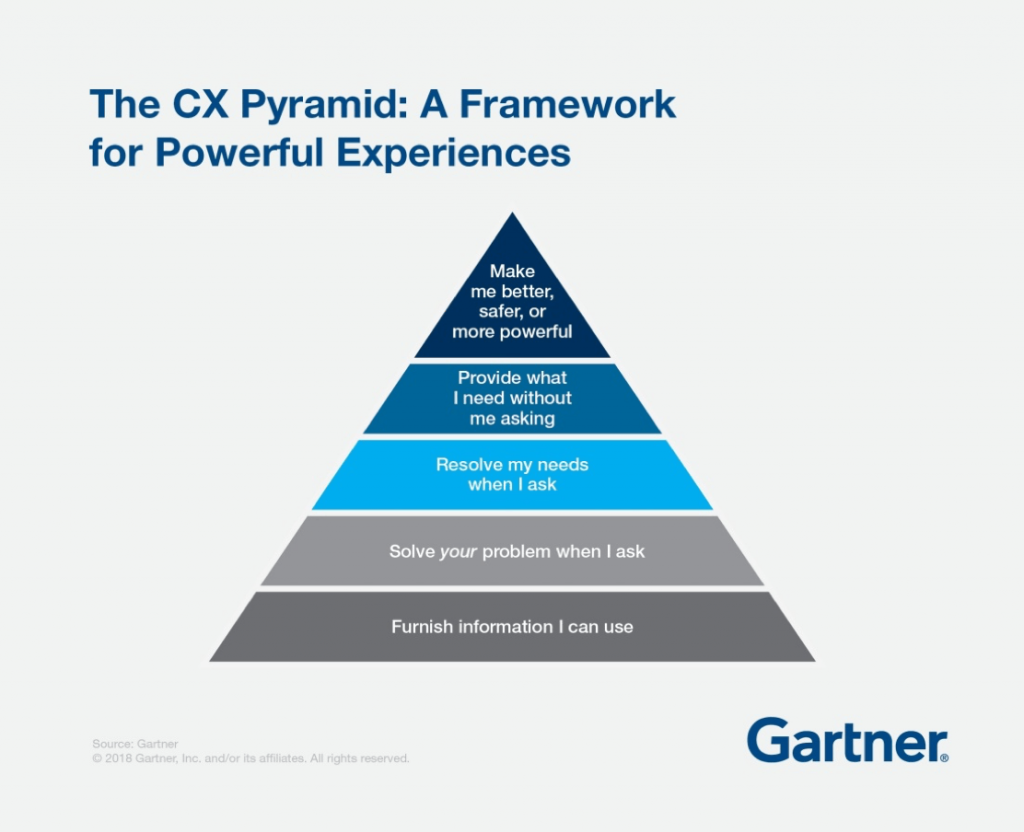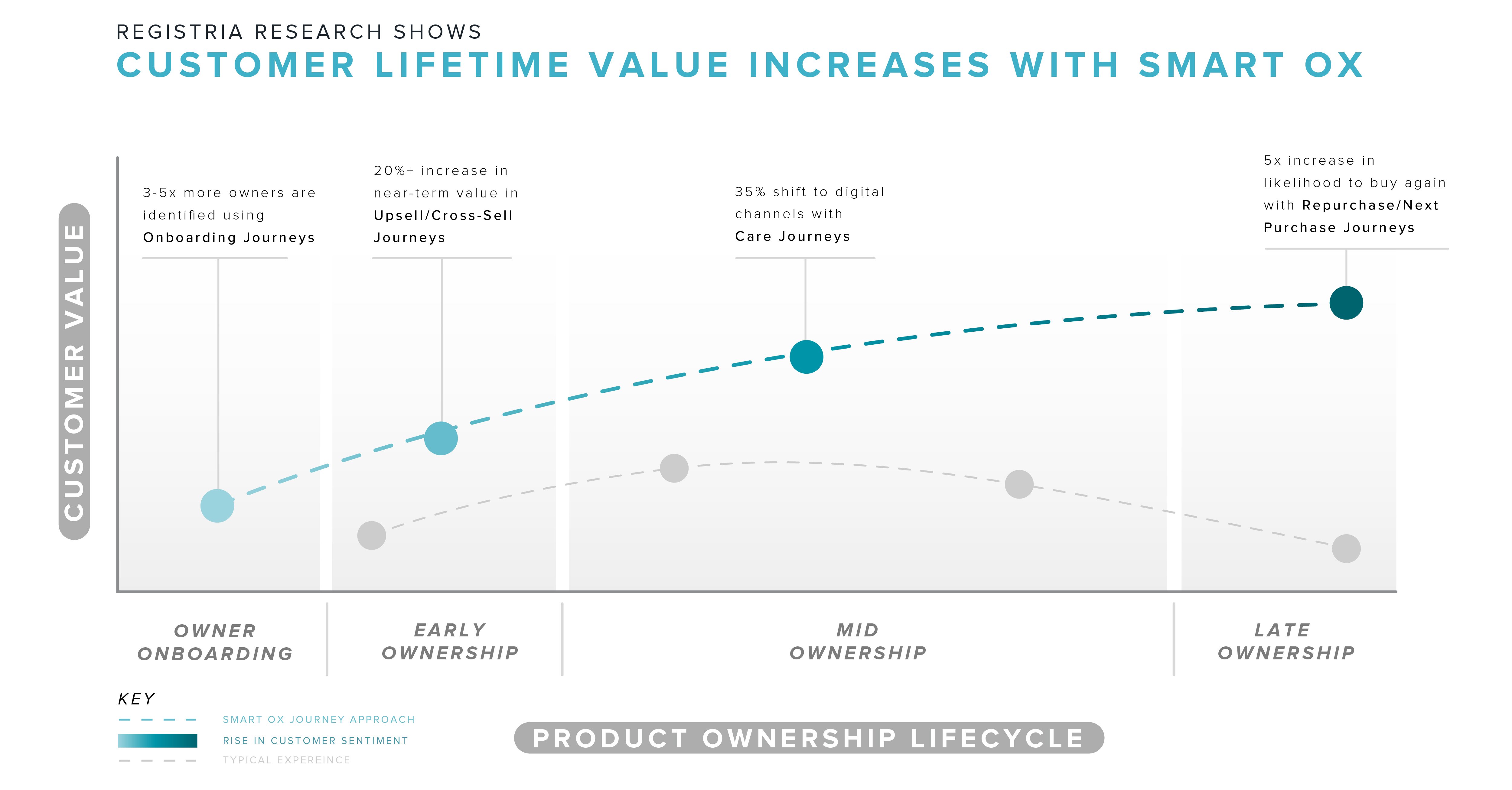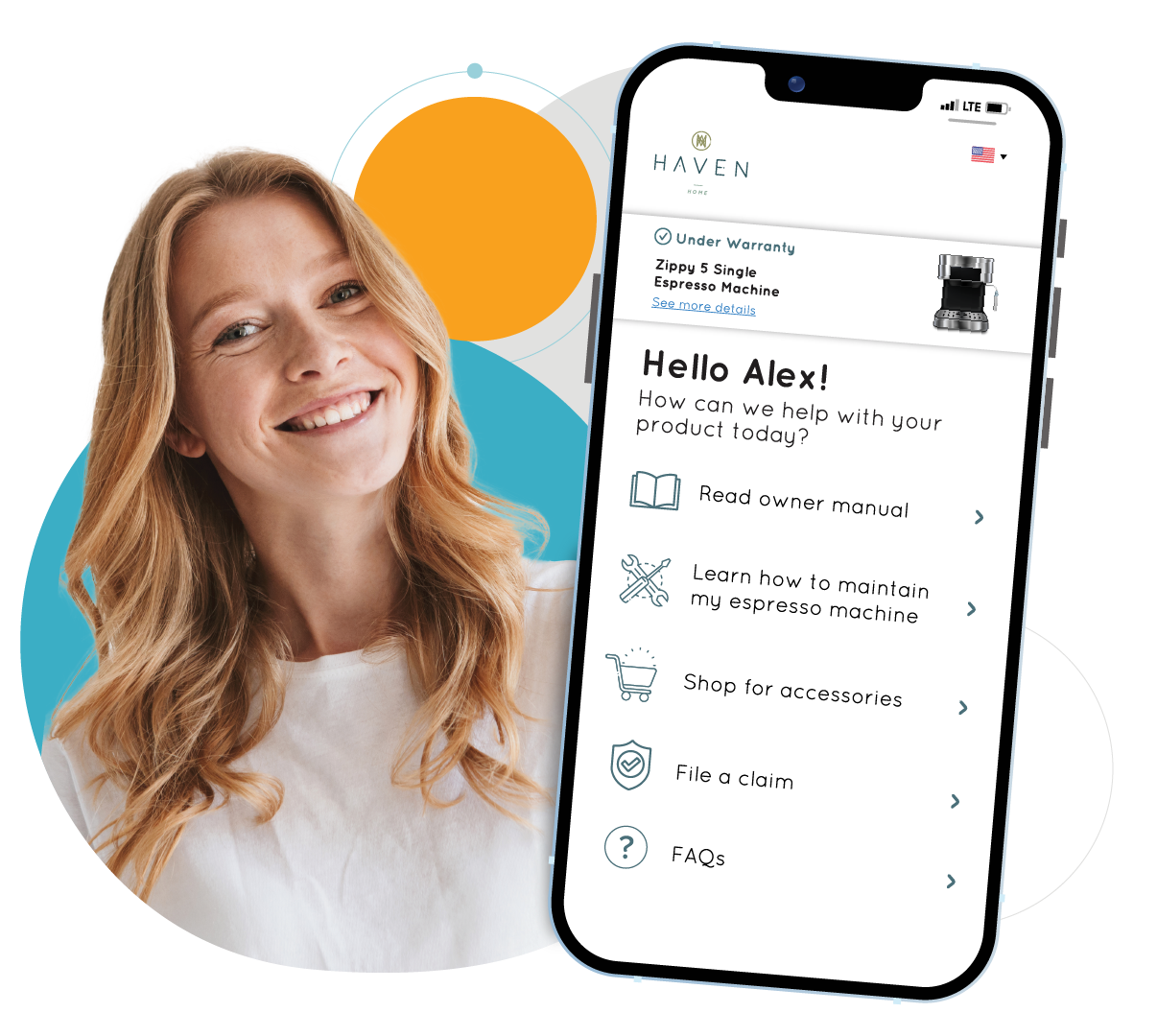The Rise of the Ownership Experience (OX)
Denver, CO – It’s the “age of the customer” and consumers are reshaping how business is done. Buyers are more demanding and more informed than ever....
OUR SOLUTIONS
OUR TECHNOLOGY
5 min read
Registria : Apr 18, 2017 12:01:23 PM

A growing number of brands are using customer journey maps to improve the customer experience, both before and after a sale. Mapping is used to uncover the steps a customer takes to discover and research a brand’s product, and ultimately purchase it. Post-purchase, mapping can help brands understand how customers actually use the product and to increase customer engagement and advocacy.

Even though there are benefits to understanding the entire customer life cycle from the customer’s point of view, most companies focus on the phases leading up to and through a purchase. Fewer spend time mapping the post-purchase phases – and that’s a mistake.
Registria recently spoke with Michael Trapani, a Product Marketing Leader at Watson Marketing, a division of IBM, about how brands are leveraging data in the customer journey mapping process, and why neglecting the entire customer journey is a missed opportunity.
Thanks for speaking with us, Michael. Can you tell us a little about yourself and your role at IBM?
Sure. I have been fascinated by technology, and its effect on our daily lives, as far back as I can remember. That interest has taken me from small, agile startups to enterprise tech companies. Currently I’m a Product Marketing Leader at Watson Marketing, which is a customer engagement platform infused with the cognitive capabilities of Watson to help brands better engage with their customers.
How are you seeing companies use data, in particular IBM Watson, to help them with understanding the customer journey?
One of my favorite features of Watson Marketing is Journey Analysis and Journey Designer. Our customers use these capabilities to both understand how their customers are navigating the customer journey, and also use this valuable information to help them create even better customer journey maps. Using Journey Analysis, companies can actually see how the customer is moving through the customer journey, on an aggregate level. For example, viewing an email that you sent them, then going to your website, adding something to their cart then abandoning it, responding to an SMS message from you about their cart later, going back to your website and finally making the purchase, and then the steps they might take after that. So it gives brands insights they might not otherwise have. Which journeys are the most profitable? Which ones are the fastest? This way, they can go back and say, “Interesting, maybe we should make these changes to our customer journey,” and then create a new one with Journey Designer.
That’s a very hands-on way of understanding the customer journey.
Absolutely! It’s one thing to create a customer journey from scratch on a whiteboard or an application. It’s an entirely different thing to actually view customer journeys as customers are actually going through them. It’s like the difference between UI (User Interface) and UX (User Experience). You can build a website that looks really nice, all of your buttons look nice, your colors look great, but if your customer doesn’t know how to navigate the page or feels confused by the layout, it doesn’t help them accomplish their goals.
What are the key touchpoints to capture in the journey mapping process?
I’m a big believer in making brand interactions relevant, easy and useful. For example, a useful or interesting video delivered on a social channel, or a personalized mobile app notification. You need to create touchpoints that are easy to receive, easy to digest and take in. Customers aren’t going to leave the places they’re at on a daily basis, like their social networking apps or email or messaging app. So all of those places are important to make sure the content can be delivered easily. Touchpoints also need to be relevant to the customer’s day or their point in the customer journey. Finally, they need to be useful, giving them some relevant information or telling them something they need to know.
There are so many touchpoints leading to the "Buy" phase that mapping the customer journey can get very complicated. Is the post-purchase journey easier to map?
I think creating customer journeys in the pre-purchase phases are more difficult because they’re less predictable. Yet, once a customer buys your product, you have an actual, specific person that you can speak to. You have data, such as purchase history, and the types of messages that appeal to them most. It’s much easier to talk to “Sarah” than it is to talk to “female, young professional, Northeast new buyer.” In the post-purchase phase, you have a lot more trust with customers, and more of a connection with them, so you can engage with them in a more personalized way.
Last year, a Forrester study commissioned by IBM found that 66% of companies are mapping customer journeys during the "Buy" phase, but only 26% are studying the customer journey during the post-purchase "Engage" phase. Why do you think this is?
I think that customer journeys are often confused with campaigns. For that reason a lot of focus around building a customer journey is on acquisition. But I don’t think that does the concept of customer journeys justice. I strongly believe and agree with the study when they say that mapping the post-purchase phase is very important and an opportunity that marketers should take advantage of. Not just because it’s easier, but it’s also less expensive. Marketers know it’s much more cost-effective to retain customers than it is to acquire them. So why not dedicate an appropriate portion of your budget to accomplishing this? Your marketing dollar is going to go a lot further.
With all the fervor around engagement and brand loyalty, why aren't brands bringing the customer journey full circle to better understand the post-purchase phase?
It’s tough. Customer experiences are becoming less linear and more three-dimensional. I also think that some organizations treat post-purchase as a “‘bonus.” Obviously you need to acquire the customer before you can retain them, so it is secondary in that sense. But I think that it is not secondary in your ability to create better marketing in the future. You can use the brand advocates you develop within a post-purchase customer journey to create better marketing in the future, you can get testimonials and customer stories, and you can offer loyalty programs that create customers who advocate for your brand on your behalf. For that reason, I would consider it a first-class element of the customer journey. It’s just as important as the pre-purchase journey because creating advocacy within a brand is the goal for everyone, and it’s extremely beneficial for your marketing as a whole.
With the spread of online reviews, social media, and the like, is brand advocacy a recent shift in how companies market?
I don’t think brand advocacy is a recent shift, I think we created a name for it more recently. But customer advocacy has always been important. You look at when you’re comparison shopping, as far back as you can remember doing that, you probably asked for advice from someone. Developing those advocates on the brand side is something that was always considered by marketers, but now we have some interesting tools and ways that that advocacy can be more amplified, and it’s brought it to the forefront.
What can organizations do to cultivate brand advocates during the post-purchase phase?
I think that brands owe it to their customers to make their days better, especially after they’ve made a purchase from them. I think that there’s nothing more reinforcing, for me at least, than when I get something, maybe something as simple as a happy birthday message, or even a specialized offer because of how often I make a purchase from that brand. Even better, something that has nothing to do with buying at all and it’s not particularly driving toward more revenue, but it’s treating me as an individual and it’s trying to make my day better. I think any effort that a marketer can make, especially in the post-purchase process, is worthwhile. Because you don’t have to do those things, the surprise and delight element – something that makes you have an emotional response – rather than a transactional element. Having that emotional connection with individuals is really useful in creating advocacy.
Thank you very much for your time and insights, Michael. Any final thoughts you’d like to share on building brand advocates?
Thanks for having me. Brands are more than the products that they sell. In an ideal world, they are complete experiences, they should stand behind everything they make, they should talk to their customers as individuals, they can even have ethical principles that are admired by their customers, and they should be mission based. I think that sticking by these principles, trying to be the best version of the brand you want to be perceived as, and actually putting in the work to make that happen, is a big part of creating advocates. That last part is important, because it’s very easy for a customer to identify when a brand is faking it.

Denver, CO – It’s the “age of the customer” and consumers are reshaping how business is done. Buyers are more demanding and more informed than ever....

1 min read
To say that the term “customer experience” is ubiquitous is like saying there are quite a few stars in the galaxy. A simple Google search returns two...

Imagine your customers being able to access the product information and support they need on demand, in a matter of seconds, and engaging with your...